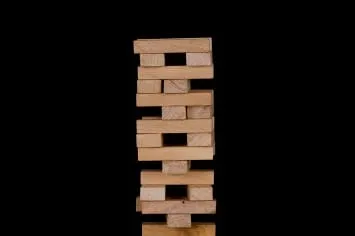Lower back pain
Take care of your body. It’s the only place you have to live.
–Jim Rohn
The impact of lower back pain
Lower back pain is the number 1 cause cause of disability worldwide. Lower back pain keeps people out of the game (of life). It interrupts their sleep. It prevents them from participating in activities that they want to doing. It’s depressing. It changes our psychology, our self-perception and how others perceive us.
Lower back pain can be experienced at any age, even in the young. Most people experience it at least once in their lifetime. Even when it starts of mildly, 5% of those people will go on to develop chronic back pain.
The World Health Organization says that in 2020 it affected 619 million people globally (this is likely an underestimate) and that number is expected to rise by 25% over the next 15 years. It is reported that half of employed Americans deal with back pain every year and is one of the most common reasons for missing work. About 40% of all office workers have lower back pain. Despite how common it is, about 90% of cases are said to have “mechanical back pain” which leaves patients wondering what is this “black box” diagnosis?
Symptoms of lower back pain
Back pain is the most notable symptom in those with lower back pain. However, the pain can radiate to other parts of the body like the buttocks or down into the legs. Because back pain changes the way you move, you can also start experiencing pain in other areas of your body like your neck, shoulders, wrists, etc.
Lower back pain is very disruptive to your life and this disruption can be associated with many other symptoms:
- irritability
- depression
- anxiety
- difficulty with concentration
- poor sleep
- weight gain
Also, some patients resort to medications to help cope with the lower back pain which could cause many side effects like stomach upset, constipation and dependency.
Red flags of lower back pain
Although 90% of lower back pain is diagnosed as “mechanical lower back pain” (to be discussed in the next section), patients should try to identify other serious causes of lower back pain with their primary health care providers. Some clues that there may be a more serious cause include:
- having had a a serious injury
- numbness and weakness in your legs
- problems with bladder and bowel control
- unexplained weight loss
- fever
- nausea and vomiting
- taking steroid medication on a regular basis
- have medical issues that weaken/suppress your immune system
- a history of cancer
- a history of osteoporosis
The biomechanical underpinnings of mechanical lower back pain
What is mechanical lower back pain?
Every patient is shaped differently, moves differently and engages in different activities. Some people have very good movement strategies for their body types and what they are doing, and others don’t. When we don’t use our bodies efficiently, structures in the back get strained, pinched or banged which ends up creating inflammation and possibly post-traumatic anatomical changes. When this happens, patients become even more susceptible to irritating these tissues further. Ironically, patients start to (reflexively) change the way they move (almost always for the worse) further aggravating these tissues which are already more trigger happy for inflammation.
To get a better idea of the types of structures that can be injured, it’s good to get an anatomy lesson. Each of these structures need to be protected by you by selecting appropriate ways to do activities and by bracing your body in ways that prevent injurious forces to work on them. Most people who injure their backs injury them by doing exercises/activities with inappropriate form (even under the guidance of personal trainers!) or being too sedentary. Virtually nobody has formally learned how to use their body with proper biomechanics. However, most of us did know how to move well at some point of our lives (usually when we were younger) as most of us naturally developed with ideal biomechanics.
In order to allow these inflammed tissues to heal, we need to protect them from forces working on them. We need to train our bodies to move the way we should have been moving in the first place. In doing this, we start to strengthen the ideal muscles we should be using (i.e., the work-horses of our body) and give rest to the scapegoats that are injured.
The psychological underpinnings of mechanical lower back pain
As mentioned, lower back pain is very disruptive to our lifestyle. Many patients become preoccupied with back safety and withdraw from many life activities. Many times they do this gradually and intend for it to be a short-term solution but it ends up lasting a long time. For example, we recently saw a 40-year-old female who had been struggling with lower back pain for 2 years. She recently travelled with friends to the Caribbean and in the airport and so asked for an airport attendant to transport her around in a wheel chair in the airport. How does she know that this is the ideal way to play this situation at this phase of her injury? What are the consequences of this decision on our psyche? How likely is it that we will get stronger if we continue to make similar decisions? When did you start giving in to the status quo?
Like that, people start to compromise the control they have over their lives because of this preoccupation of pain. Their self-esteem takes a hit. Psychiatric consequences are common. Even the experience of pain changes. As we discussed in the neuropsychological underpinning of headache, pain is an experience that is processed by our brain. Chronic lower back pain is processed similarly to chronic headache and so negative emotions, thoughts and outlooks associated with your lower back pain actually turn up the dial on the pain’s volume. That is, it increases the pain at the most fundamental level.
Mechanical lower back pain treatments
Activity changes
For most with lower back pain, it started because of the types of activities we were doing and how we were doing them. Obviously, we have to stop doing them, or stop doing them that way if we want to give our backs a break. To do this effectively, you need to understand the anatomy and biomechanics of the lower back. Correcting faulty ergonomics is an important part of changing our activities.
Exercises
For most with lower back pain, they do not know how to move their bodies biomechanically correctly. Even though people think that when you are injured, you should rest, this is an acceptable strategy if you know the situation is going to get better on its own (which is usually not applicable to lower back pain). So, activity changes should replace the traditional “rest” people think of. And then they should invest in learning how to move biomechanically correctly so that they no longer aggravate injured lower back structures. Often times patients are pleasantly surprised that they feel no pain doing fundamental biomechanically correct exercises even while they are injured. This is a very motivating experience and helps foster hope and enthusiasm. It changes our psychology and redirects our attention from injured mentality to performance mentality.
Medication
Many primary health care providers prescribe medication to help patients cope with the inflammation and pain of lower back pain. Generally, these can be helpful in the short-term but lose their efficacy with time and so are not ideal long-term solutions.
Passive therapies
Majority of patients resort to massage therapy, TENS, US, Soft-tissue therapy, electrotherapeutics, spinal manipulation & mobilization, traction and other passive therapies (treatments done to you) to manage their back pain. They do it because it feels good while it’s being done. However, generally, these therapies will not address the issues raised in the sections above on activity changes and exercise, and so are not good long-term strategies. They can be helpful for managing symptoms and may help people to better participate in active rehabilitation (training you do to strengthen yourself).
Relaxation training
Once you understand the biomechanics of mechanical lower back pain, you start to appreciate that when muscles are activated, they can crunch bones, discs and nerves together. How do you know if you are activating some muscles too much? This is very common in lower back pain and often escapes patients’ awareness. Moreover, increasing muscle tone beyond what is required to do a task (known as dysponesis) is often a consequences of stress. Many of us react to stress like this unwittingly. Relaxation training can teach you to become more aware of muscle tension levels so you can regain control of how much you tense muscles, that is, utilize appropriate muscle tension for the task you are doing.
Psychotherapy
As mentioned, lower back pain is correlated with crises in self-esteem and/or mental health diagnoses. Managing this well not only helps us become aware of perspectives that will help us regain control over our health, it fundamentally changes the pain at the neuropsychological level. You are much more likely to be successful when you believe that you have a shot at success vs. believing that any attempt will be futile, so why bother.
Surgery
Surgery is not indicated for the alleviation of pain in mechanical lower back pain. Surgery is an option in the minority of lower back pain cases which don’t normally receive the diagnosis of “mechanical lower back pain”. For example, if Tuberculosis is eating away at the bone in your lower back, surgery will aim at removing the infection and stabilizing the spine. If a disc herniation is causing an inability to move muscles in your legs, surgeons may operate quickly to avoid irreparable damage to the nerves.
What happens to mechanical lower back pain if you do nothing about it and try to wait it out?
As you can see from the statistics provided, most people with mechanical lower back pain have a smoldering course. They learn to co-exist with it, often compromising their lifestyle. Many people will go on to have chronic pain.
Who is a good candidate for managing their mechanical lower back pain functionally?
Anyone who is willing to put in the work to get strong so that back pain has no place to start up are good candidates. This is a real project. It involves education, motivational support, and training. It’s not much different than what athletes do when training for better performance.
Relevant OHIP-funded Group Counselling
Lower back pain management offered in...

Medical Assessment
OHIP-funded medical assessments for behavioural & lifestyle interventions



